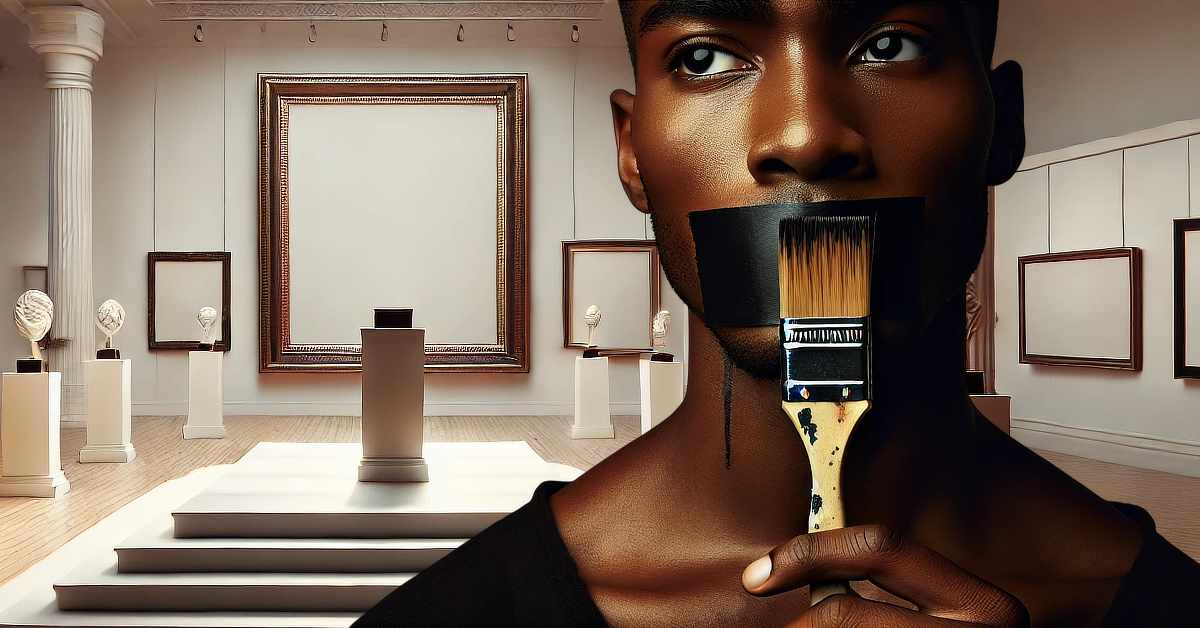Racism in the Art World: A Problem We Can't Ignore

A heavy topic this week and although it’s nothing new, I feel like it’s important to talk about it. The art world prides itself on creativity, freedom of expression, and pushing boundaries—but one boundary that remains stubbornly in place is racism. From exclusionary gallery spaces to funding disparities, systemic racism continues to impact BIPOC artists in profound ways.
As a white artist and designer, I’ve been reflecting on my role in this system and how I can use my platform not to speak for anyone, but to amplify the voices of those who face these injustices.
The Reality of Racism in the Art World
A recent post on Threads brought this issue to my attention once again: a black artist shared that he was terminated from an arts organization for speaking up on behalf of young Black and Brown artists. His advocacy, according to the organization, was deemed to be against bylaws. In researching this post, I found another account by a black artist who faced similar racist treatment. These are just some examples of how artists who challenge the status quo are often silenced or punished for demanding equity.
Unfortunately, these aren’t isolated incidents. From museums underrepresenting BIPOC artists to institutions profiting from Black culture while failing to support Black artists, the art world has long been a space where racism operates both overtly and subtly.
Systemic Barriers That BIPOC Artists Face
Lack of Representation in Galleries and Museums
While major art institutions claim to be making efforts toward diversity, the numbers tell a different story. Studies have shown that collections in major museums overwhelmingly feature white artists, with BIPOC artists making up only a small fraction of exhibited and collected works.Funding Disparities
Grants, fellowships, and residencies often favor white artists, whether due to biased selection committees, systemic networking barriers, or unconscious preferences. Many BIPOC artists struggle to access the same financial support that their white counterparts receive.Tokenization and Gatekeeping
When BIPOC artists are given opportunities, they are often expected to create work that centers on ethnic or cultural themes, racial trauma or social justice, rather than being allowed the artistic freedom to explore any subject they choose. Meanwhile, white artists are granted the privilege of artistic exploration without limitation.Silencing and Retaliation
As seen in the cases of the artists mentioned above, speaking up against discrimination often leads to pushback, loss of opportunities, and even professional consequences. Institutions frequently prioritize their reputations over real change.
What Can We Do?
As white artists, collectors, and art lovers, we need to do more than acknowledge the problem—we need to take action. In my opinion, standing by while others are mistreated simply because of their skin colour or ethnicity isn’t just unfair—it’s wrong. Here are some steps we can take:
- Support BIPOC Artists by purchasing their work, sharing their platforms, and engaging with their art beyond just performative allyship.
- Call Out Racism when we see it in galleries, museums, and arts organizations. Advocacy shouldn’t be left solely to those affected by the discrimination.
- Push for Institutional Change by demanding transparency in hiring, funding, and exhibition processes.
- Educate Ourselves on the history of racism in the art world and listen to BIPOC artists without centering our own perspectives.
Organizations Supporting BIPOC Artists
- Allies in Arts: A nonprofit supporting women, BIPOC, and queer artists across various mediums through grants, exhibitions, and partnerships. alliesinarts.org
- Ma’s House & BIPOC Art Studio, Inc. Residency Program: Offers residencies for U.S.-based creatives of color, providing space and resources to develop their work. artistcommunities.org
- Southern Cultural Treasures | South Arts: A multi-year program supporting BIPOC-led and -serving arts and cultural organizations in the Southern United States. southarts.org
- Sector Equity for Anti-Racism in the Arts (SEARA): Redefining equity in the arts. From mutual aid to data-driven action, this Canadian BC-based movement is driving systemic change. searafund.ca
- CultureBrew.Art: A Canadian initiative that fosters trust, connection, and equity for BIPOC artists, creating inclusive opportunities across disciplines, identities, and communities. culturebrew.art
Art is for Everyone
I believe that art is for everyone, regardless of skin colour or ethnicity. Creativity knows no racial boundaries, and an artist’s skill and vision should never be judged based on the colour of their skin. Every artist deserves the same opportunities to share their work, express themselves freely, and be recognized for their talent. The art world should be a space of inclusivity, where all voices are heard and valued equally.
Final Thoughts
Racism in the art world is not a new issue, but that doesn’t mean we should accept it as the status quo. While I can’t speak for the experiences of BIPOC artists, I can use my platform to amplify their voices and encourage others to do the same. Change happens when we refuse to be silent—and the art world needs that change.
And to all the BIPOC artist’s out there, please keep making art. It’s your right as much as it is anyone else’s.






0 Comments